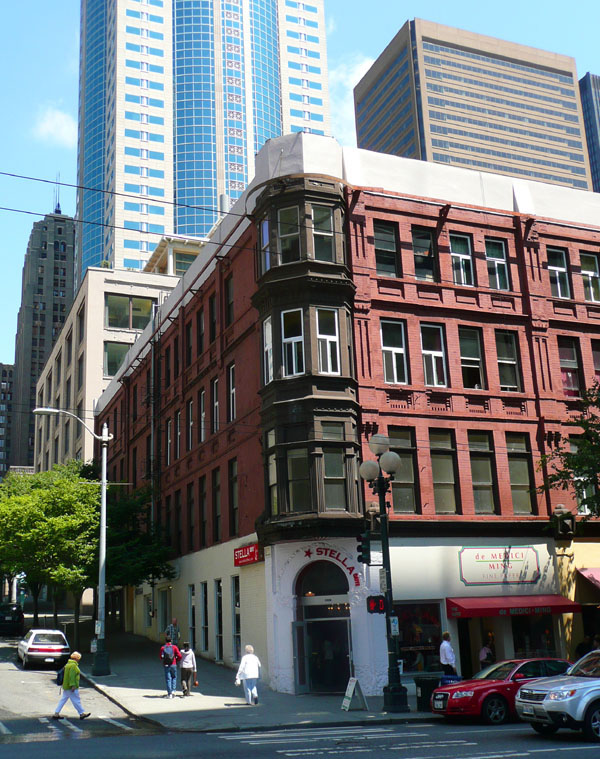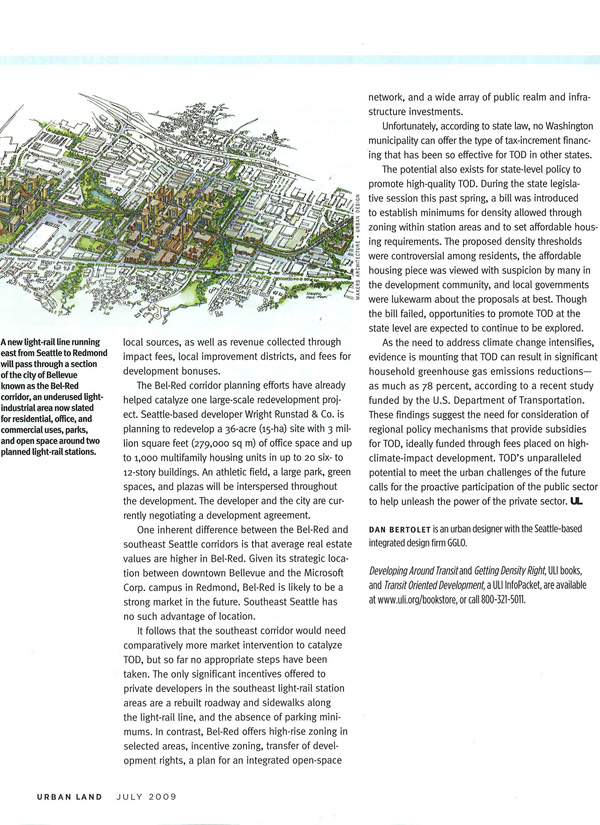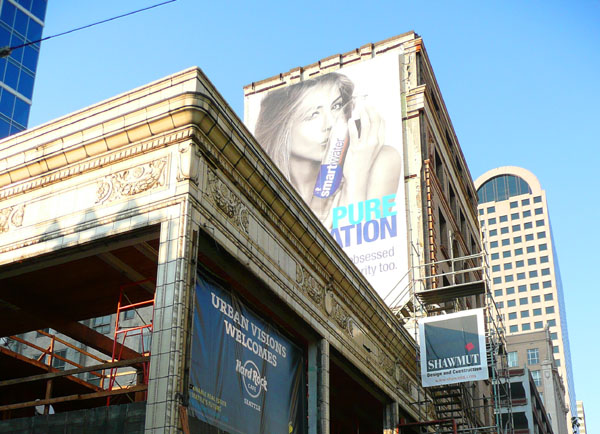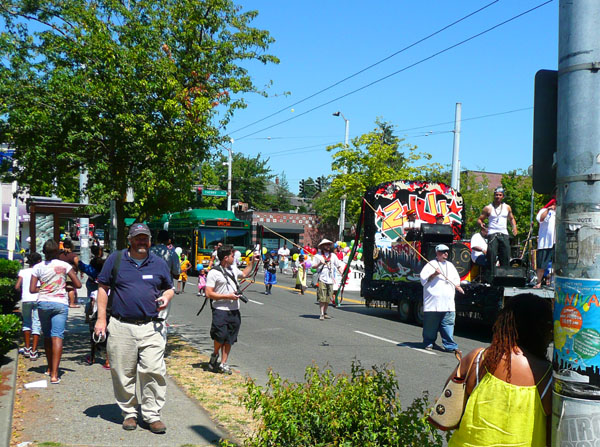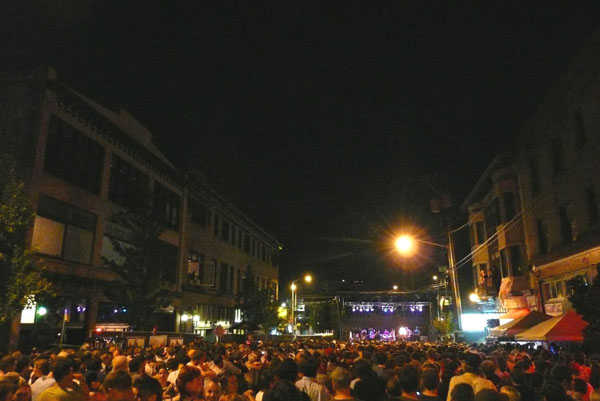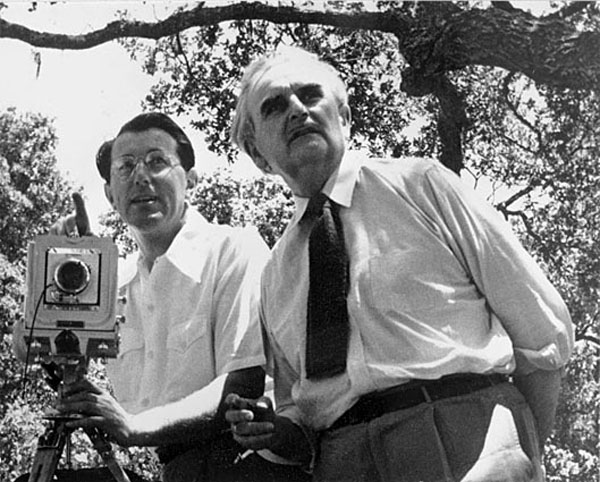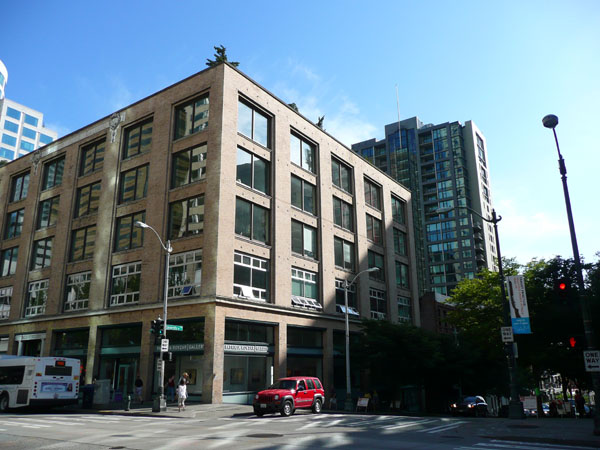In a previous post, Seattle city council candidate David Miller left lengthy comments in response to my supposition that he is a density NIMBY. His responses left me jonesin‘ for further clarification, and so I am posting my questions to David here, with the hope that he will be willing to answer them in the comments, but also fully aware that he may wisely opt to completely blow it off. (Reader warning: this is gonna get pretty wonky, but alas, it’s the only way to get at the truth.)
(1) You said that “we need to do upzones.” Please give some examples of specific locations in Seattle that you believe should be upzoned. And not upzones that would be contingent on meeting this or that precondition, but upzones that you believe should be enacted now.  Would you support upzoning single-family to multifamily anywhere in the City, and if yes, where?
(2) You said “we even agree about TOD.” Okay, let’s test that with a real example. I believe that the Beacon Hill light rail station area is ridiculously underzoned within a quarter-mile radius of the station, and that it that it should be upzoned to 65 feet in some areas, and that some lowrise areas should go to 40 or 65 feet, and that significant areas of single family should be rezoned to multifamily lowrise, and possibly even midrise in some cases. Do you agree, yes or no? If no, please describe the zoning changes that you would support, if any.
(3) You said that “I suspect we disagree about whether the state or neighborhoods get to decide precisely where the density will go and what form it will take.”  Here you are no doubt referring to the “TOD bill,” but sorry David, HB 1490 as proposed did not mandate precisely where the density would go, other than within a half-mile radius around a high-capacity transit station area. Nor did HB1490 mandate what form the density would take—the local jurisdictions would have control over that. All HB1490 would have done was to ensure that land use code did not prevent development from eventually reaching a minimum density threshold appropriate for successful TOD, on average, across the entire half-mile radius station area. And the amended version of the proposed bill only applied urban centers in Seattle—where you said you support upzones.  Please explain these apparent inconsistencies regarding your opposition to HB1490.
(4) Elaborating on #3, I believe it is safe to say that you believe planning decisions should be primarily made at the neighborhood level. But given that the environmental challenges we face are regional if not global, what happens locally can negatively impact people everywhere—neighborhoods do not live in a bubble. You said that “[The City’s] job is to protect the people that already live here,” which suggests to me that you do not appreciate these connections, and have an alarmingly narrow view of the world. Consequently, I am concerned that as a City Council member you would favor narrow neighborhood interests at the expense of progress on critical environmental issues such as climate change. Are there any situations in which you believe that “top-down” planning is appropriate, or does every decision need sign-off from each and every neighborhood resident?
(5) You said that “We also differ in that I do not believe density is automatically affordable…”  Sorry David, because that is nothing but a classic straw man argument. I have never said that, and neither has the vast majority of people who advocate for urban density. But perhaps you could explain how preventing high-density housing by only allowing low-density housing will do anything but make housing less affordable? High-density housing is inherently more affordable because it uses less land, materials, and infrastructure, and it also has the law of supply and demand on its side. Go to any neighborhood and compare the price of the average single-family house to the price of the average condo.
(6) Completing the straw man, you added that “We also differ in that I do not believe density is… automatically environmentally sound.” While there are examples of high-density housing that is not as green as it could be, in the vast majority of cases high-density housing is greener because it uses less land, materials, resources, energy, and infrastructure, and also because it is a critical ingredient for enabling alternatives to the single-occupant vehicle. Do you disagree?
(7) The affordability issue noted above in #4 was addressed in my critique of the Livable Seattle Movement document that you said “was written by someone else.”  Since you seem to want to distance yourself from that document for some reason, can you give any specific examples of arguments in it with which you disagree? Do you have any objections to my critique?
(8) You said you did co-author the 3X Capacity document that was also a subject of my critique.  Do you stand behind the claims that “overzoning contributes to lack of affordable housing and sprawl” and “attempts to concentrate densities end up driving sprawl?” If yes, then as I asked in the critique, please show us the data. I don’t believe there is any, but let’s see if you can live up to your campaign promise to “base decisions on real data.”
(9) You often refer to the 2020 growth targets with respect to the King County Buildable Lands Report. But that report uses OFM’s 2002 projections. In 2007 the OFM raised its population projection for 2020 in King County by nearly 100,000 people. This reduces surplus housing capacity significantly. Furthermore, data compiled by the Puget Sound Regional Council for Vision 2040 shows that in King County growth in urban areas has been falling far behind targets, while growth is exceeding targets in small cities and rural areas. Isn’t it misleading to reference out-of-date projections when the newer data suggest a different trend? And once Seattle negotiates new 2031 growth targets based on the more recent data this Fall—targets that will be substantially higher than the 2020 number you are still using—what is your plan for accommodating that additional growth in the 2011 Comprehensive Plan update? And is it wise to focus so much on a projection only 11 years out, given sites that are underdeveloped today will be around for the next 50 to 100 years? And even if current zoning can accommodate growth targets, does that mean should we be locked into old zoning that no longer is appropriate for changed circumstances, such as, for example, the new light rail stations? Lastly, here’s what the Washington Research Council had to say (pdf) about the Buildable Lands Report: “The problem is that a whole host of factors not considered during the process will determine whether a parcel deemed ‘buildable’ will actually see new housing construction in the next 20 years.” Given all of the above, do you still believe is it intellectually honest to insinuate—as you have done repeatedly—that we don’t really need any upzones because the Buildable Lands Report says Seattle is already overzoned?
(10) You said that concurrency is “our #1 barrier to the acceptance of more density.” First, can you please explain exactly what type of infrastructure you are talking about, and give some specific Seattle examples of where there has been new dense development that is lacking these things?  The GMA’s concurrency language is not intended as an excuse to halt development, but rather to ensure that local jurisdictions plan and fund infrastructure and amenities. What actions would you take as a City Council member to get the City to fund infrastructure and amenities so that density will be more acceptable?
(11) You have made up a term called “intraurban sprawl” that I have never heard used before by any urban planning professional. I’m inclined to believe it is a nonsense term designed to be inflammatory by co-opting the word sprawl, but perhaps you could explain it for me?  What are the metrics that define this “intraurban sprawl?” As I asked here, “could you please give a Seattle example of the sort of ‘pockets of density’ you are so concerned about?” I smell another straw man here: density advocates are not proposing that we scrap the urban center/village framework. Your boogie man who wants to turn Seattle into “one big concrete heat sink” doesn’t exist.
(12) Most of us who advocate for urban density are also generally in favor of eliminating off-street parking requirements, and would even support invoking parking maximums in some cases. Are there any land uses or areas in the City for which you believe that parking requirements should be reduced, eliminated, or given a maximum? City of Seattle code does not require any off-street parking in light rail station areas—do you agree with that policy?
(13) You said you support the backyard cottage ordinance. Do you support allowing backyard cottages in all single-family zones in the City? Would you support removing the proposed limit of 50 permits per year, since that limit would only allow about 5% of Seattle’s single-family homes to get a permit within 100 years? Would you support removing the parking requirement for backyard cottages? Don’t forget that parking takes out trees and pervious surface, which you said you want to preserve.
Congratulations, you’re done!
In summary, my take—with all due respect to the fact that you are a politician, after all—is that you are trying to have it both ways. Out of one side of your mouth you claim to support density, because you recognize that if you do not, you will not be taken seriously by anyone who understands urban sustainability. But out of the other side of your mouth you attach so many unrealistic preconditions to allowing density that your claimed support is a moot point, which allows you to remain aligned with your true base—those who are opposed to the transformation of Seattle into a more urban city. Perhaps your responses will convince me otherwise. Or who knows, perhaps your responses will convince you to stop pretending to be someone you’re not.




